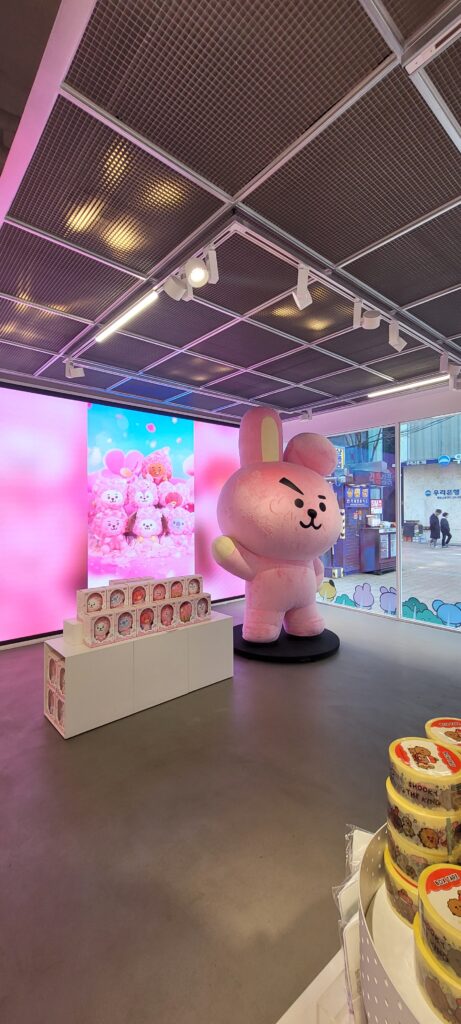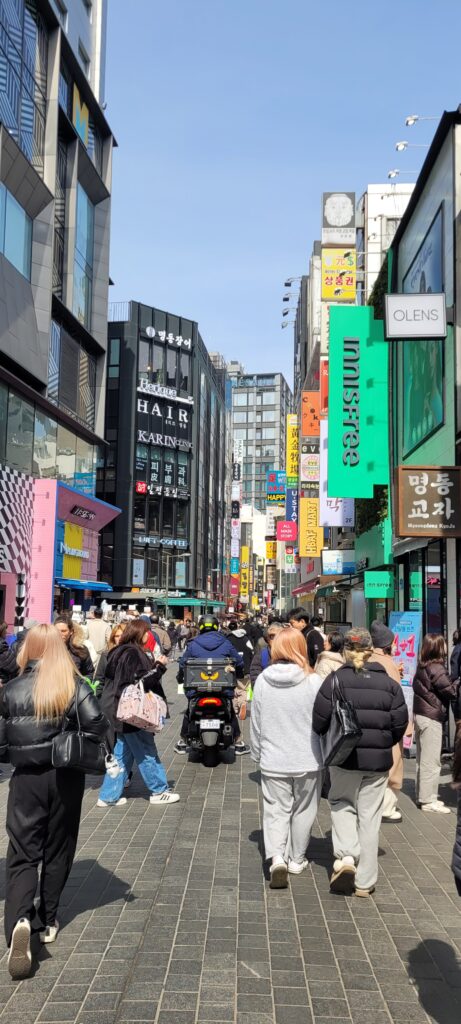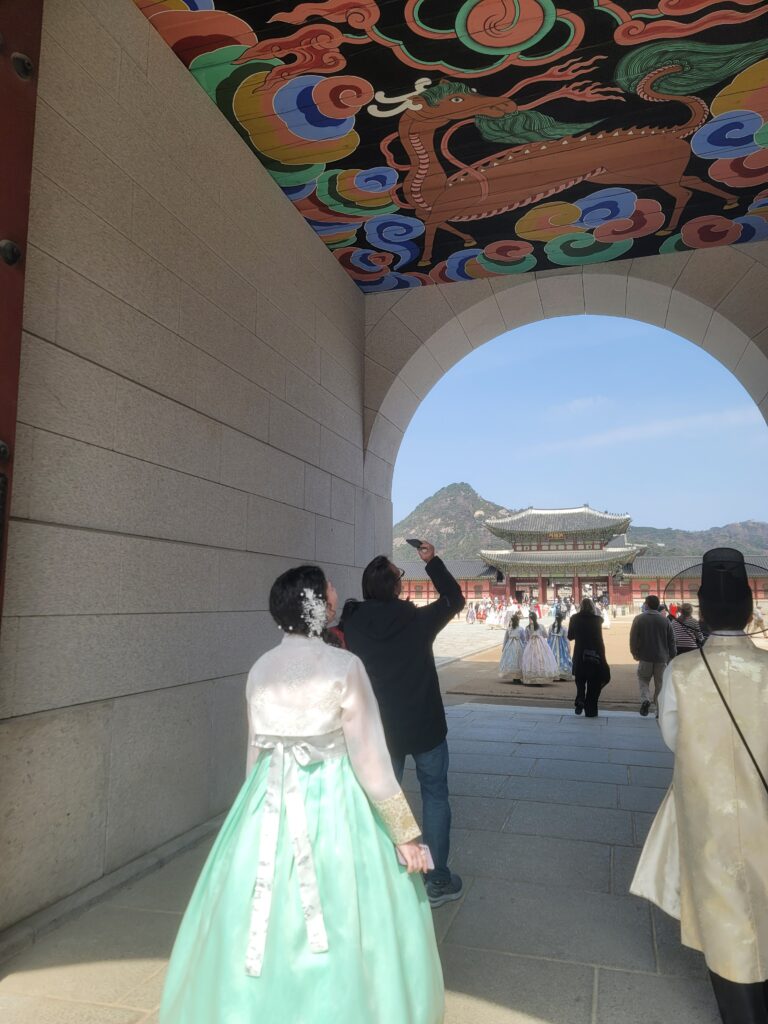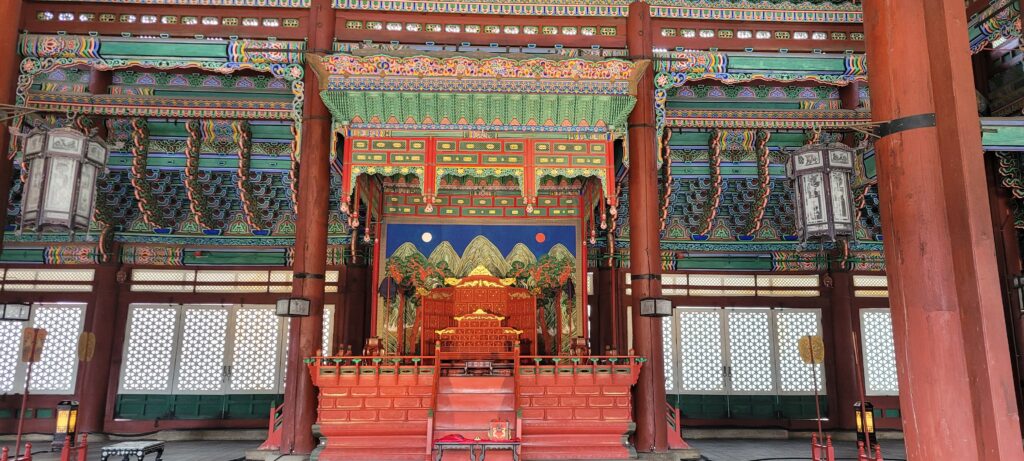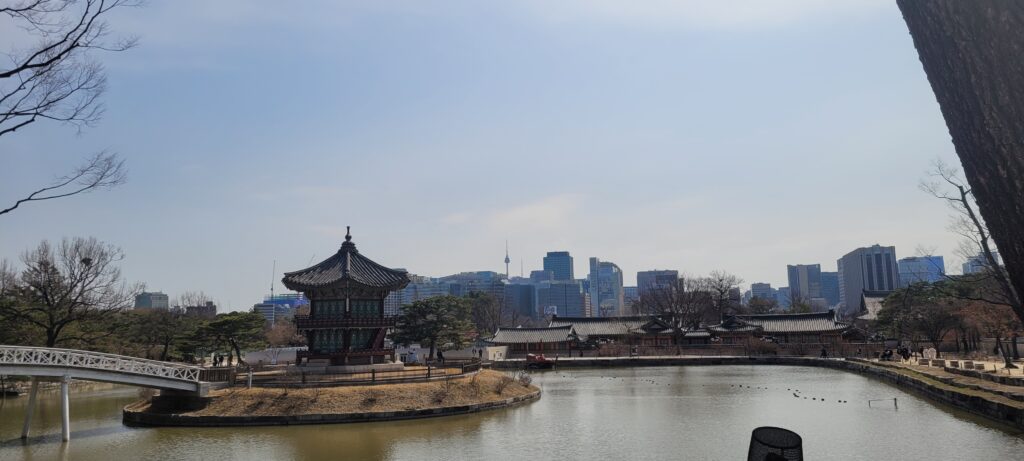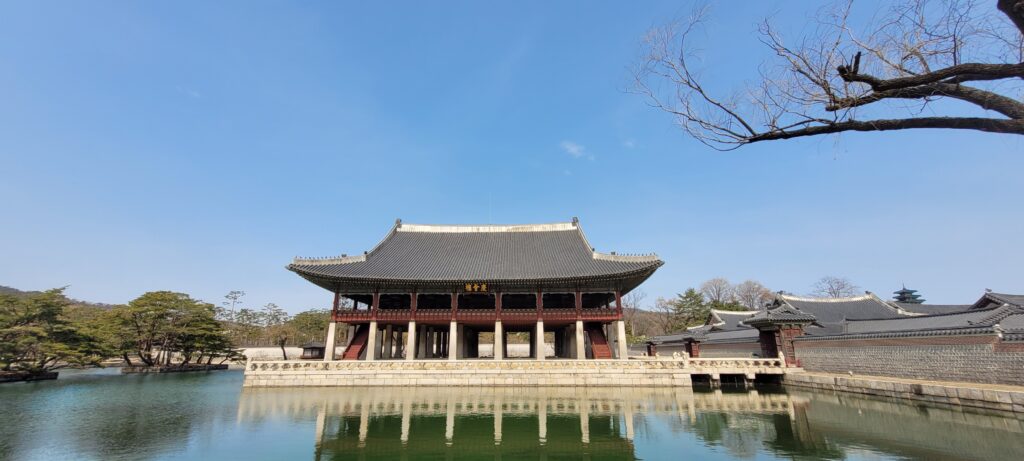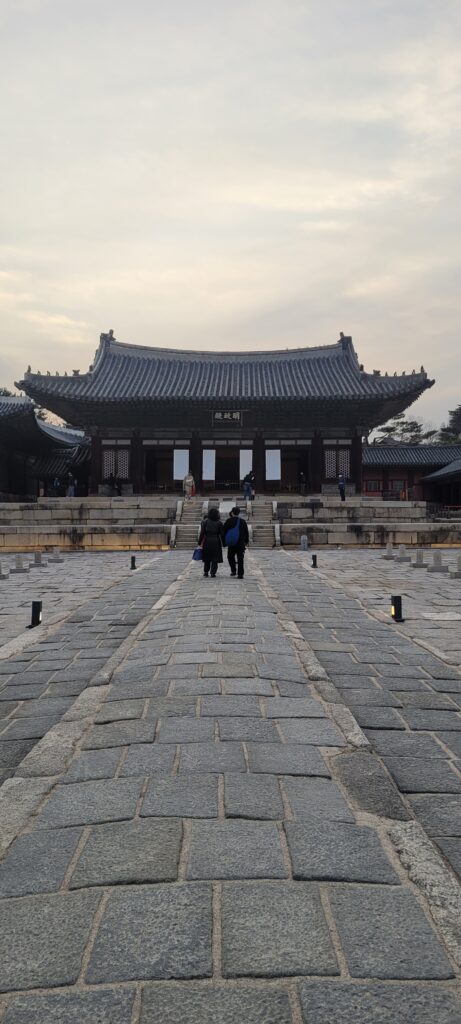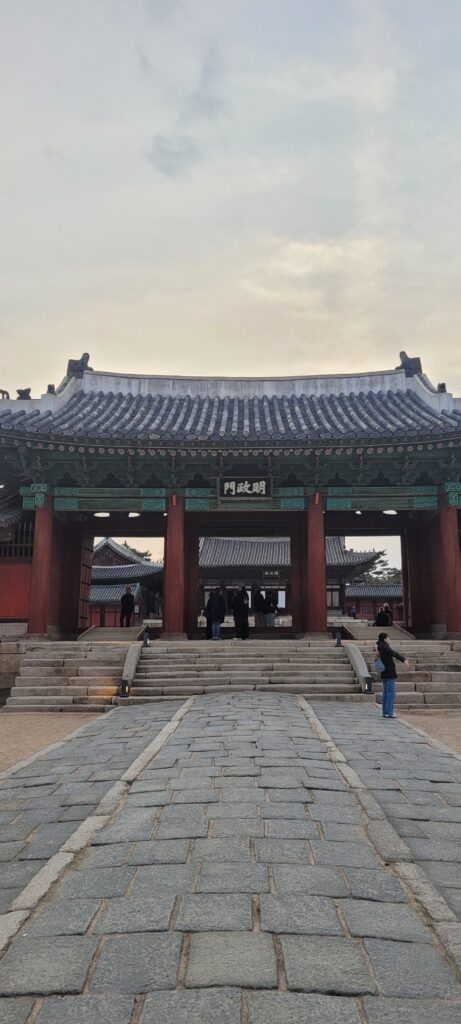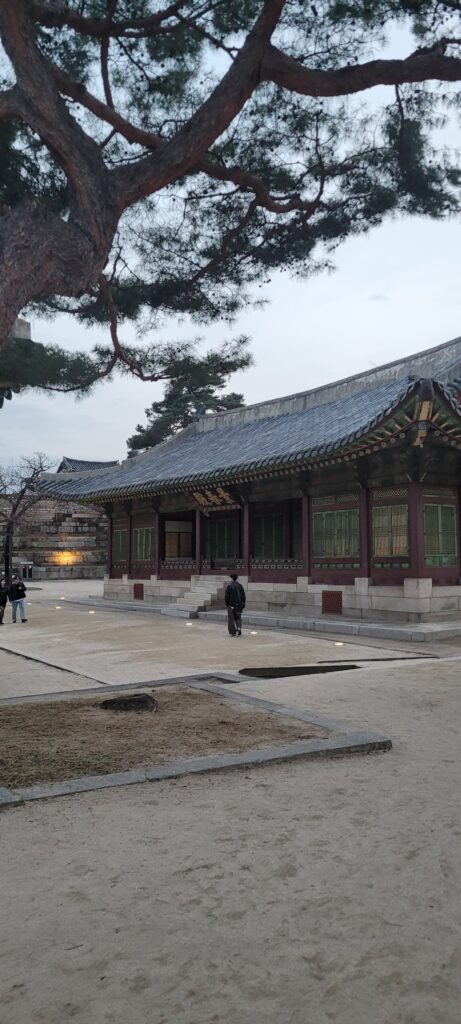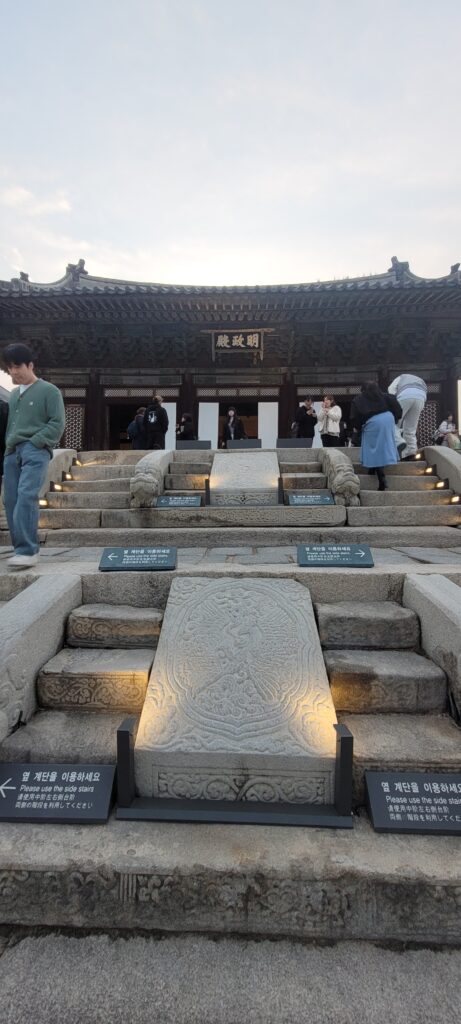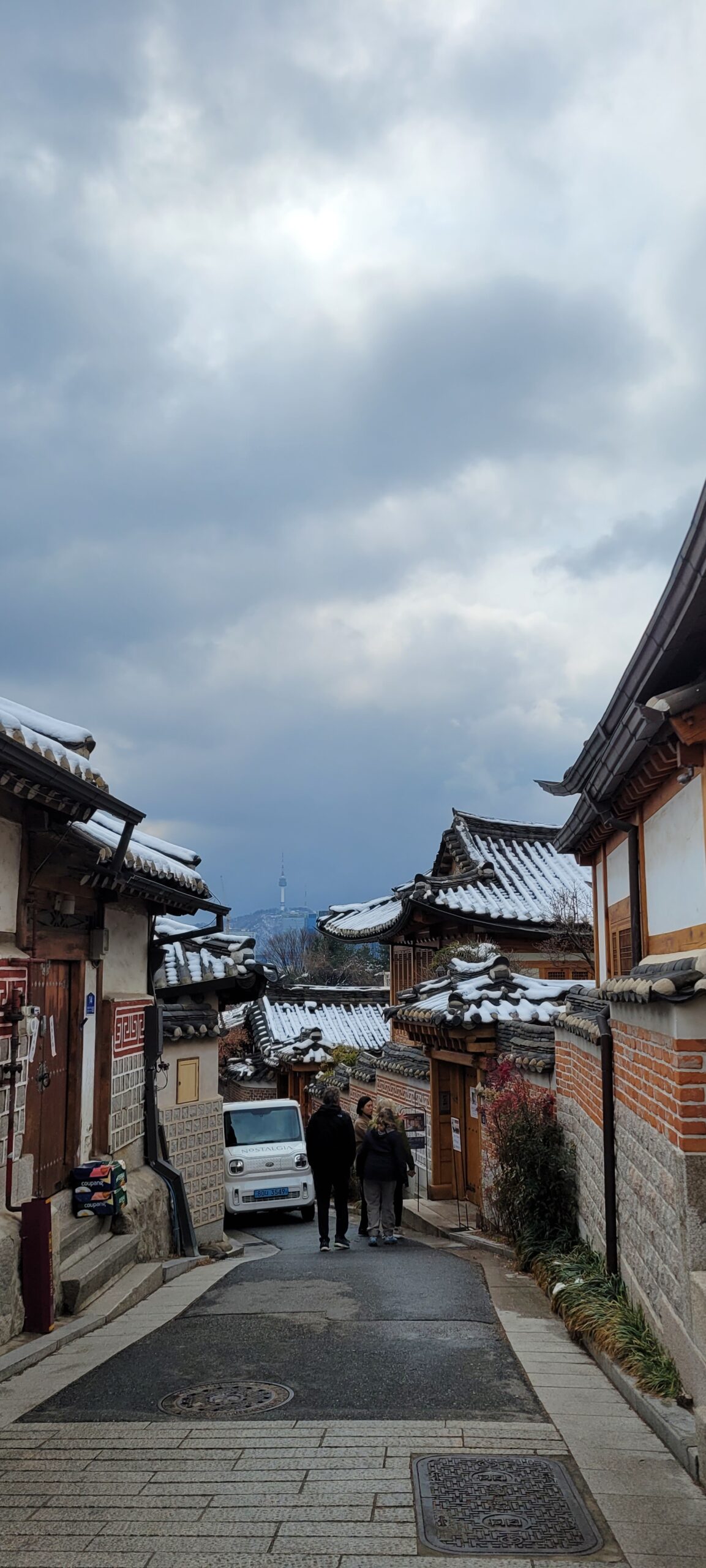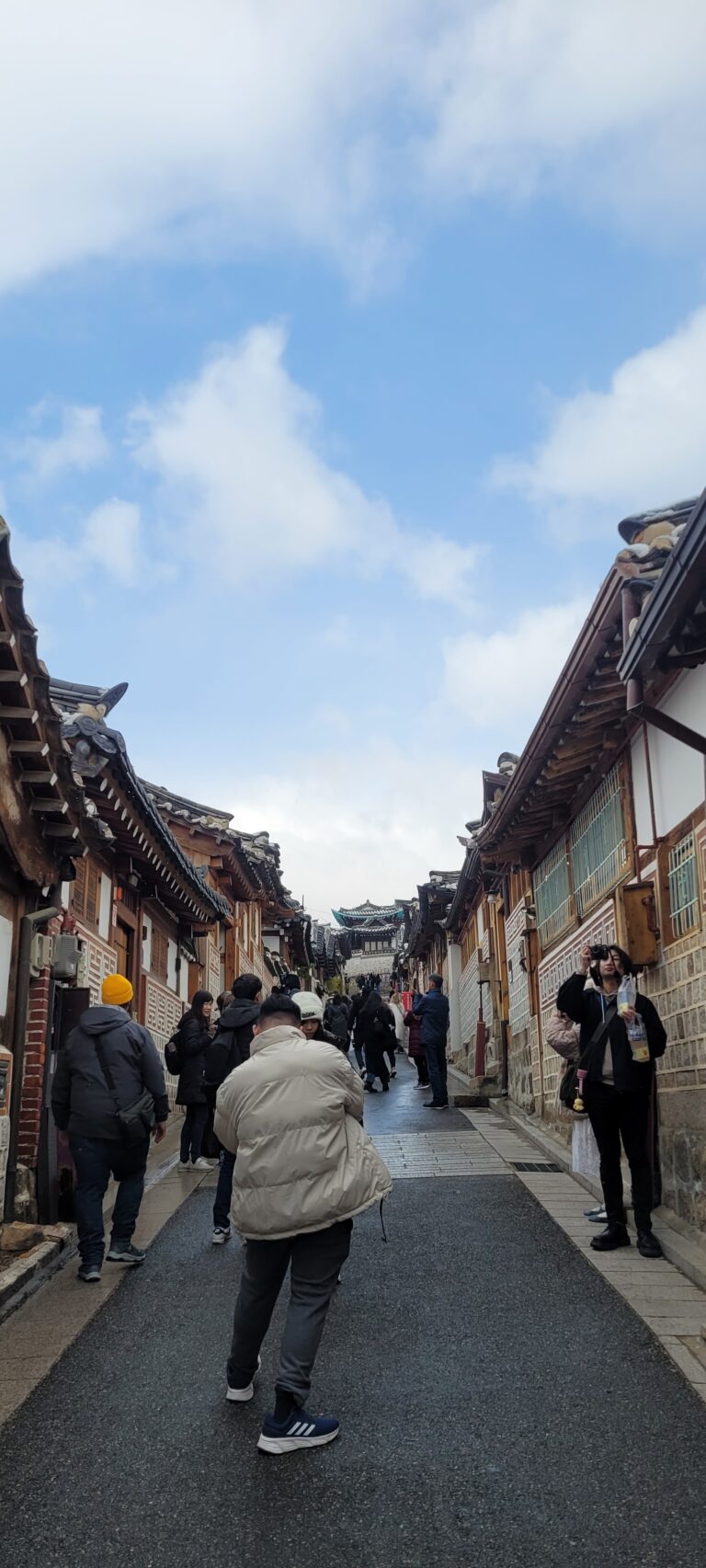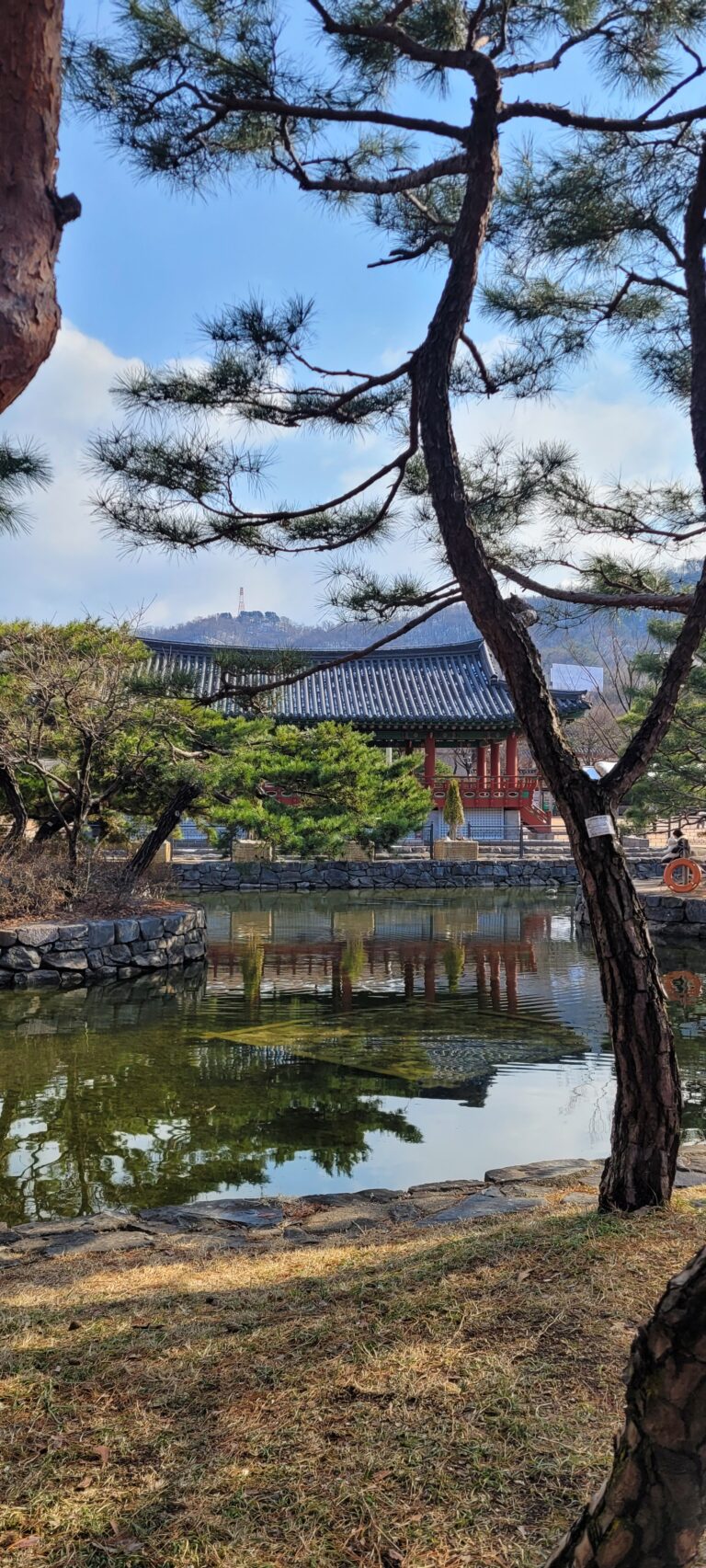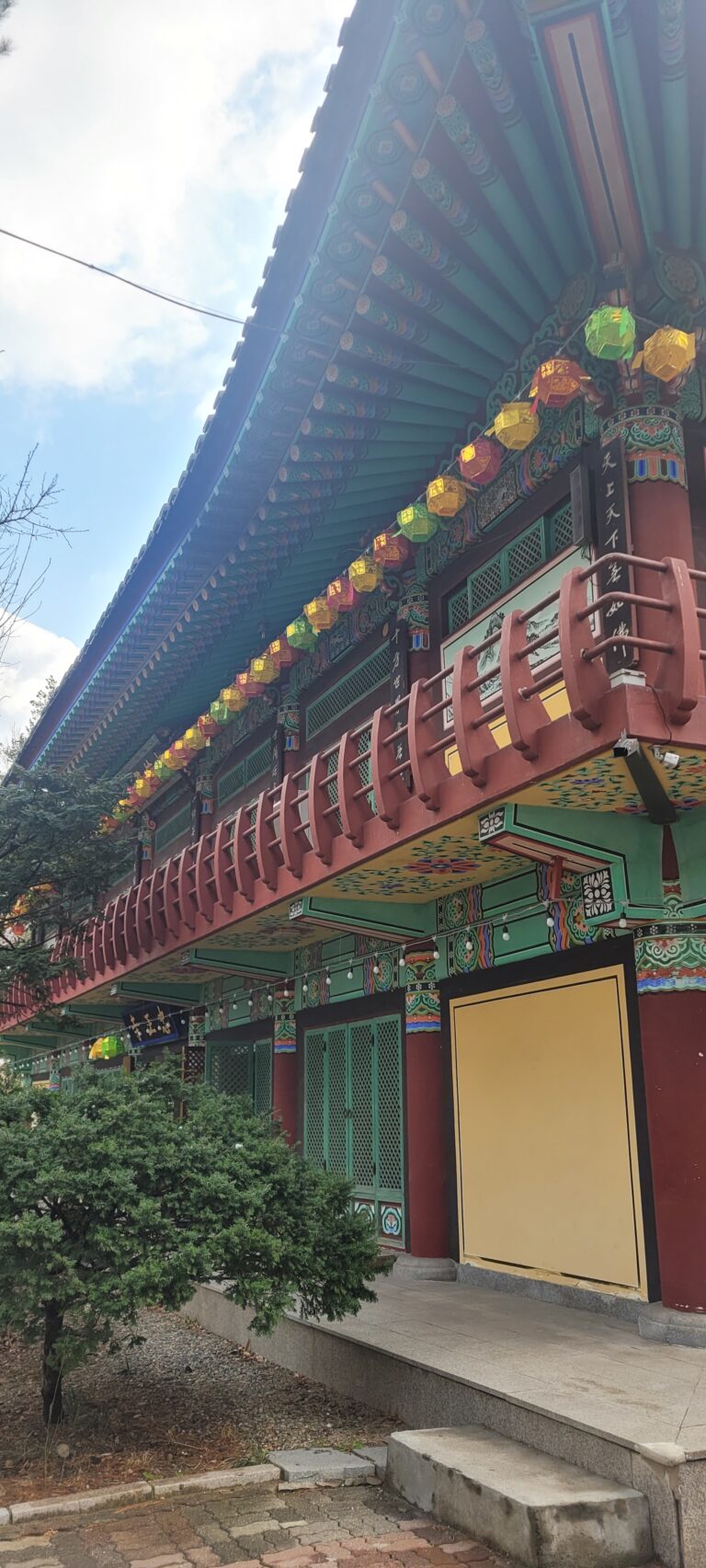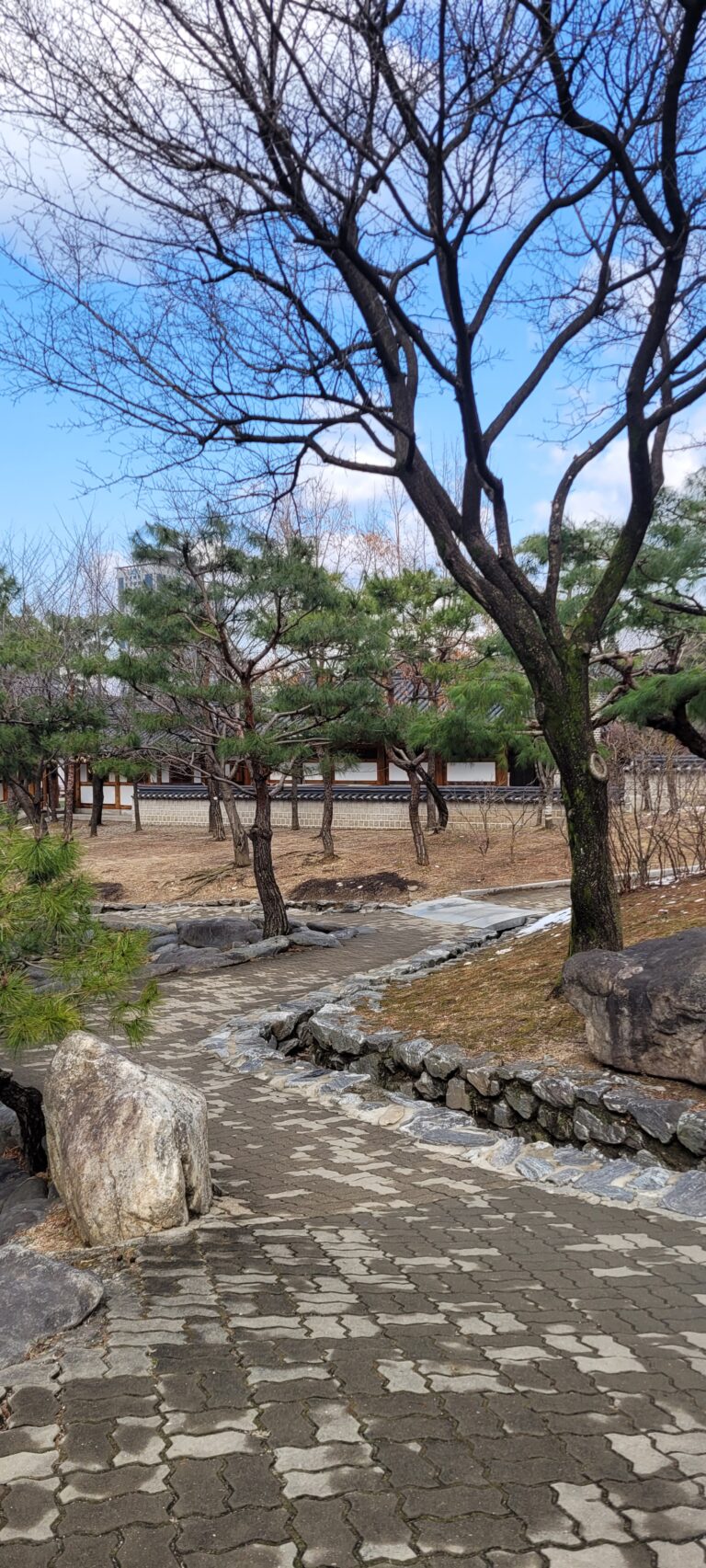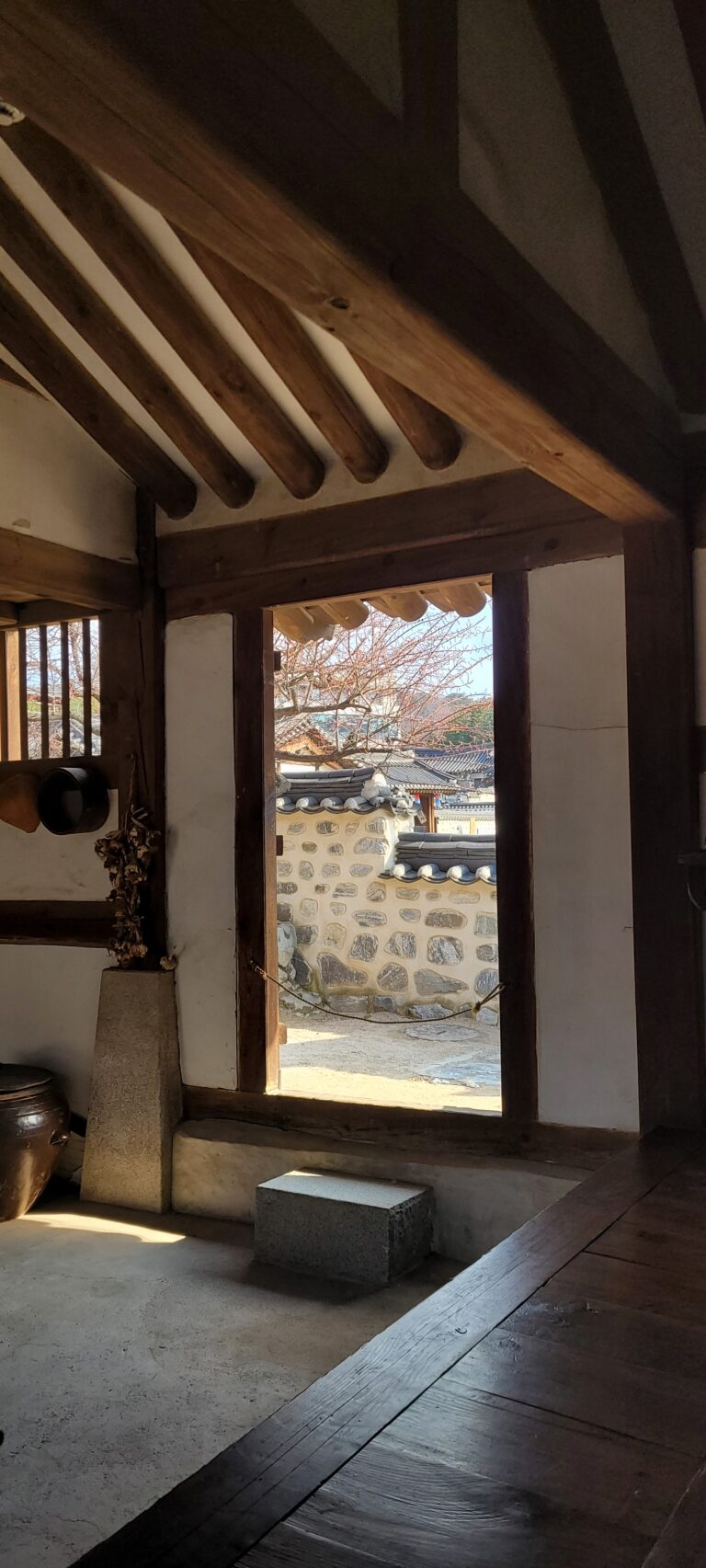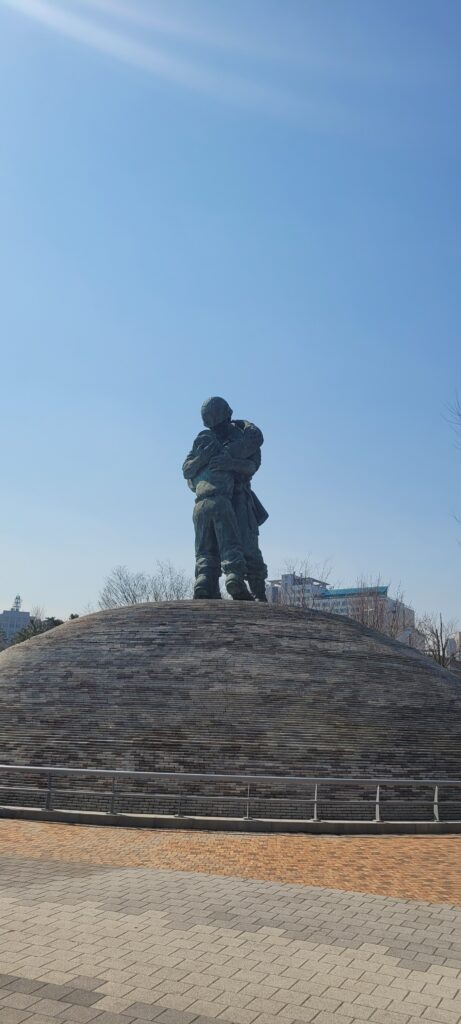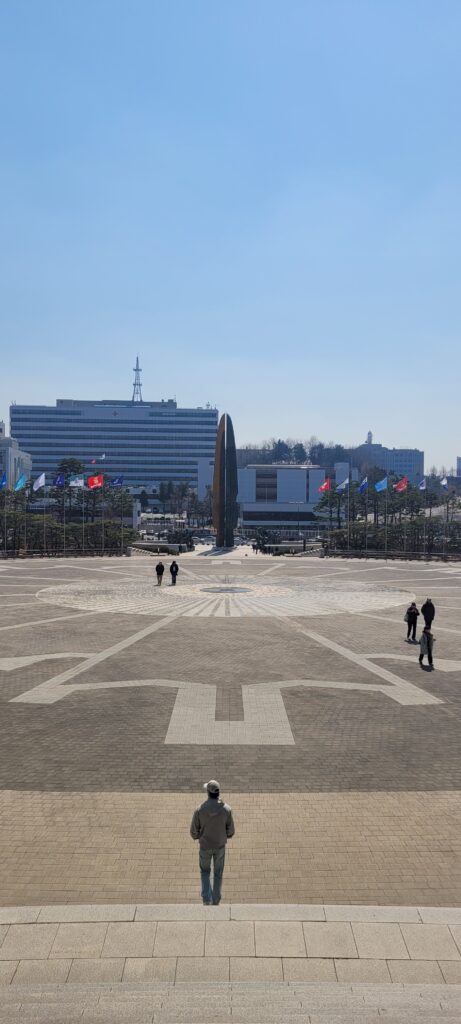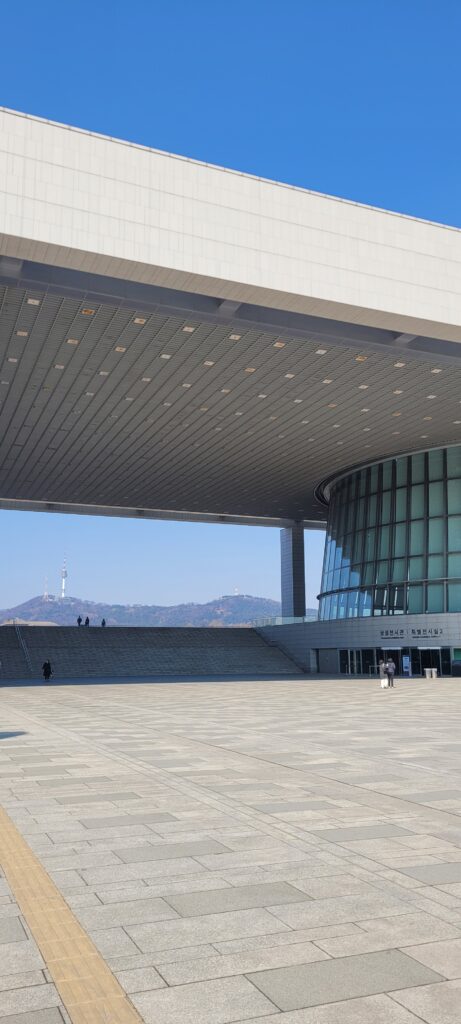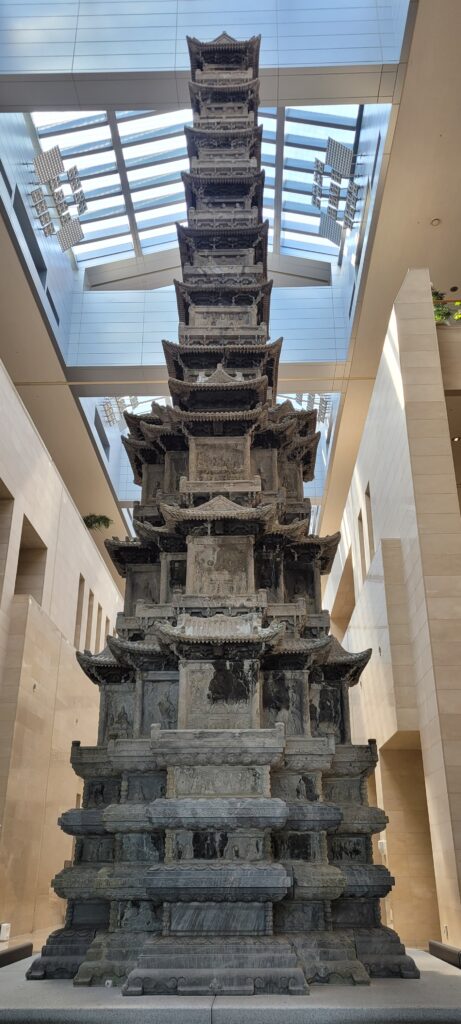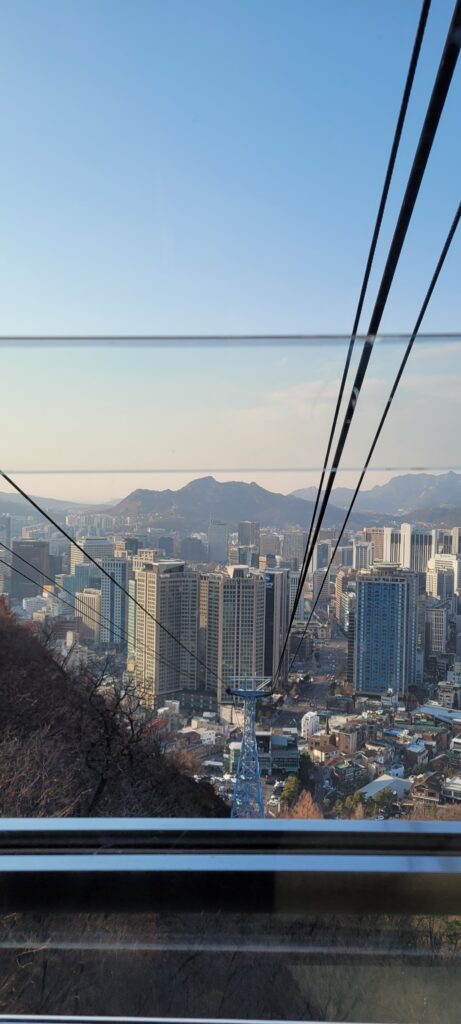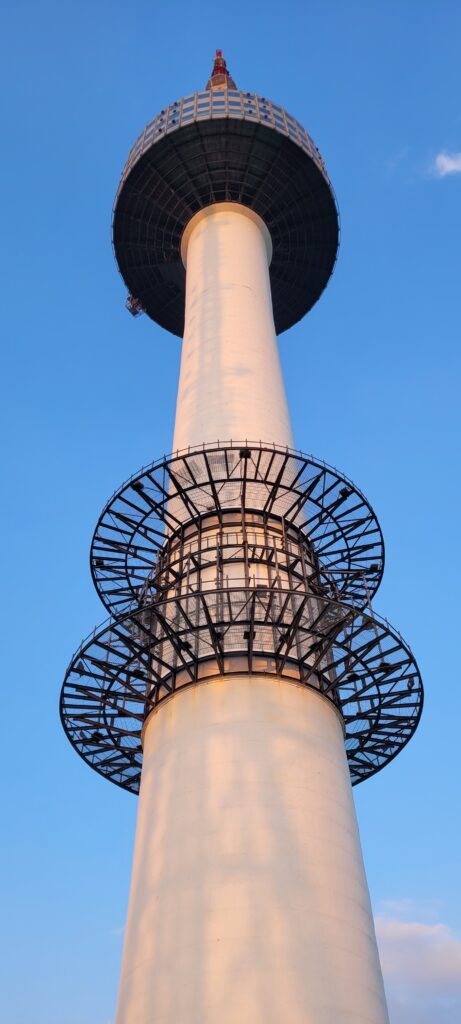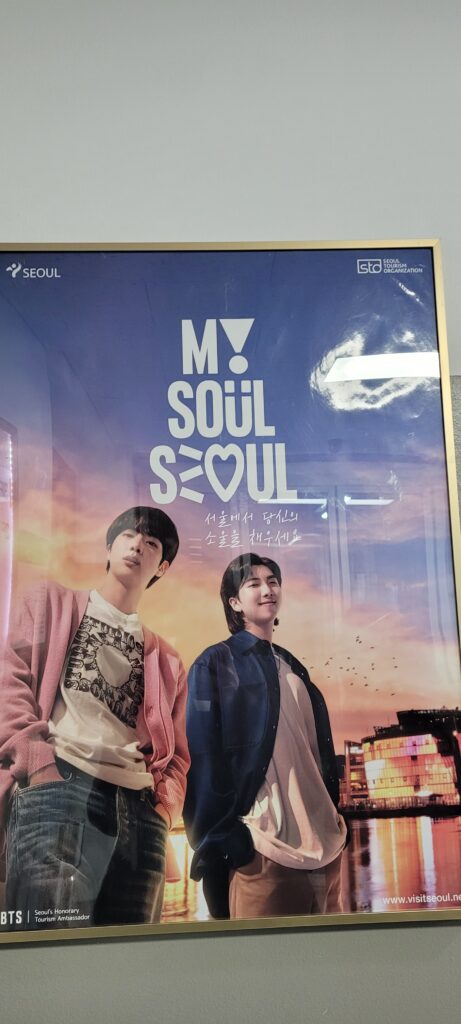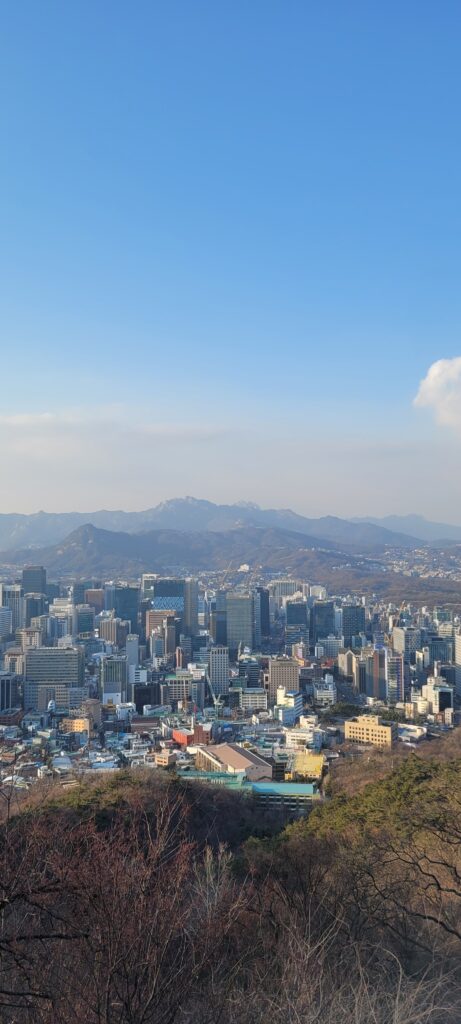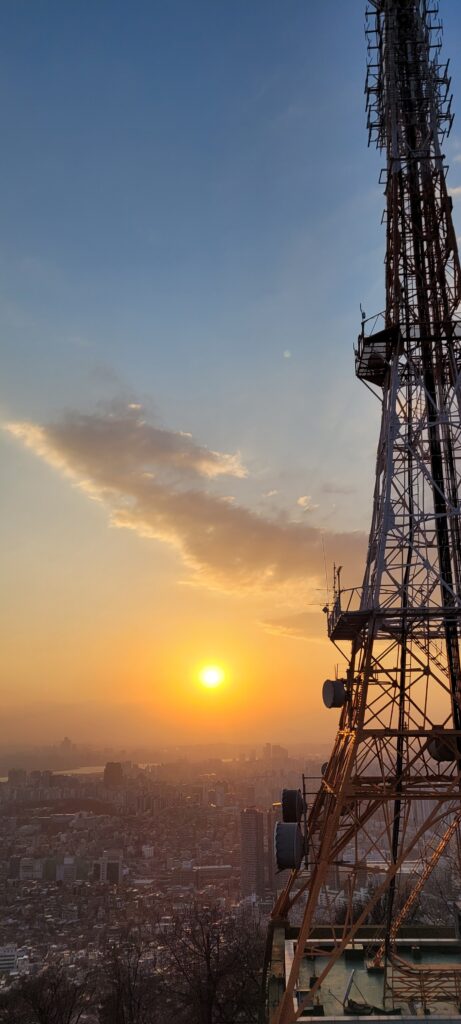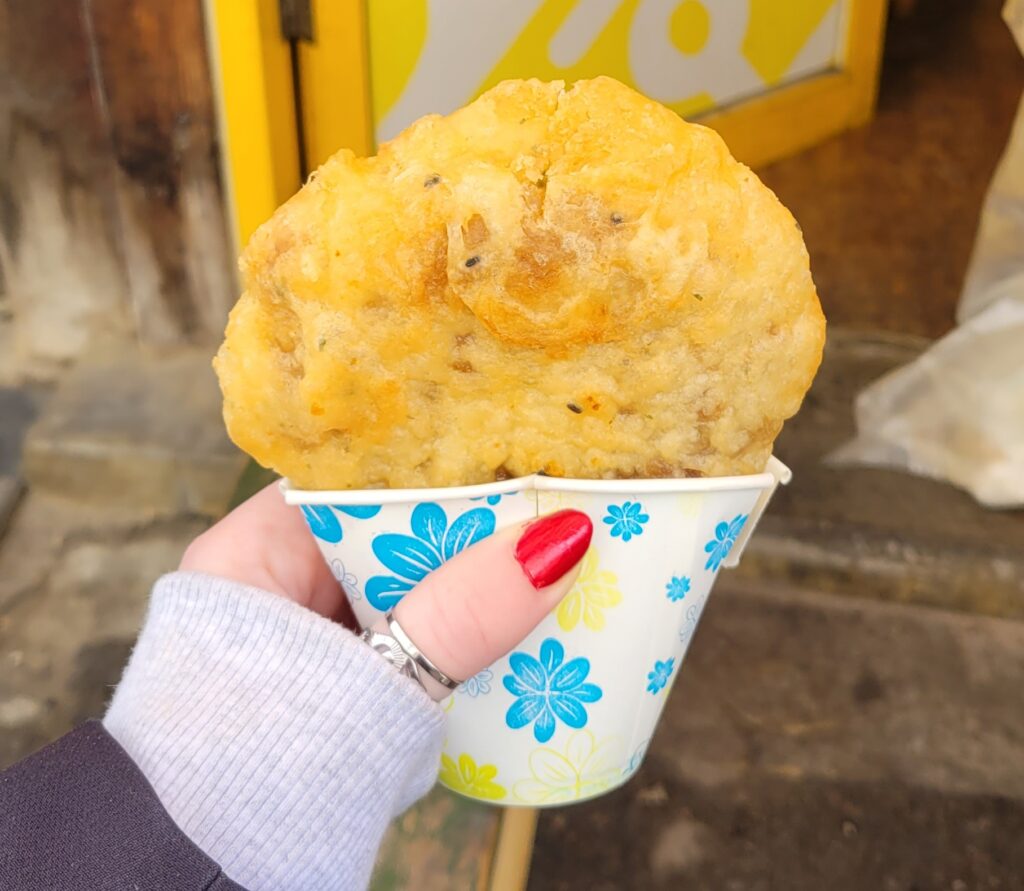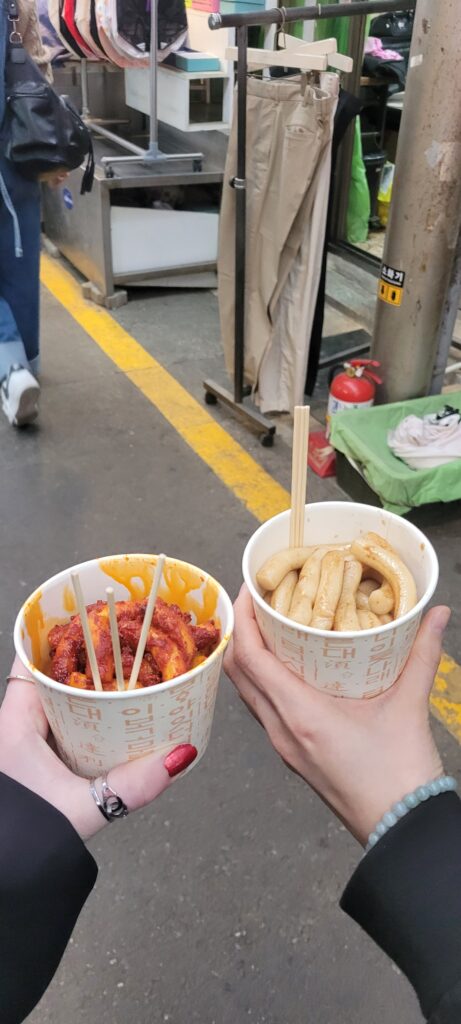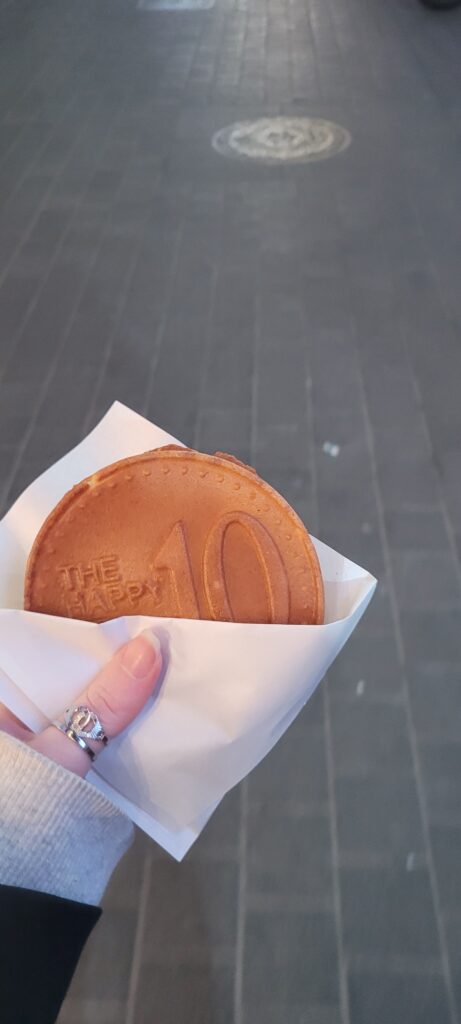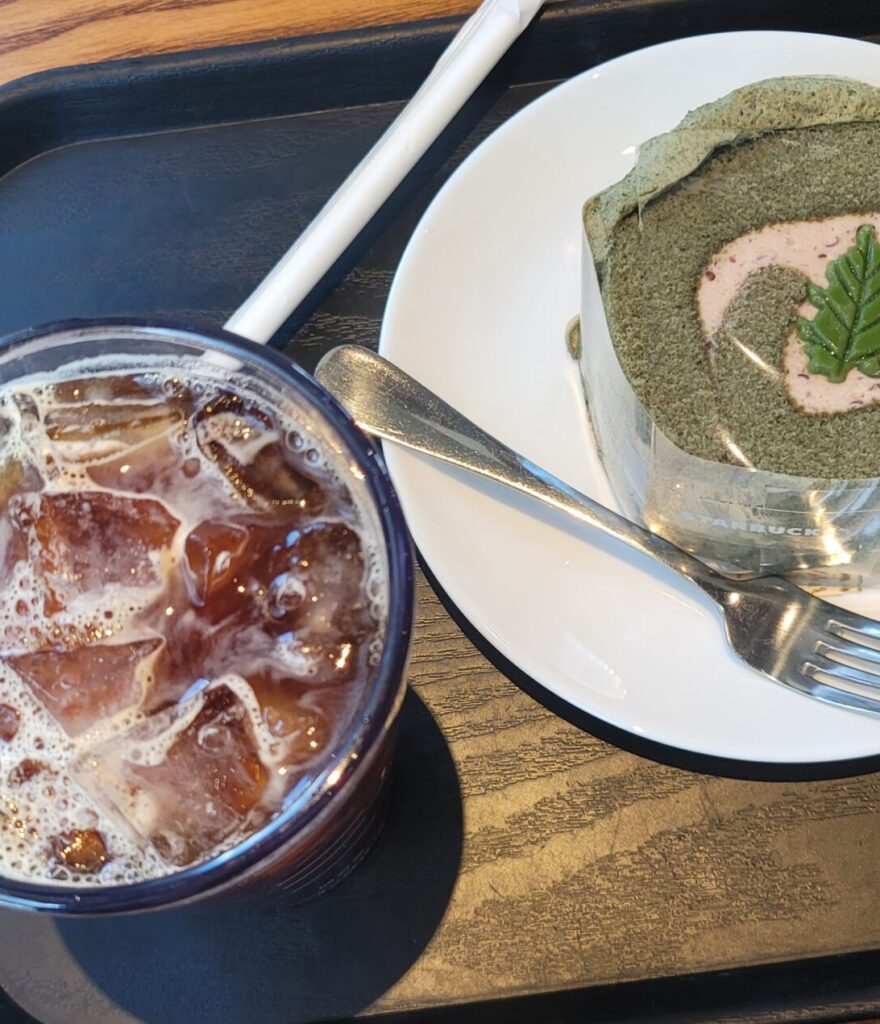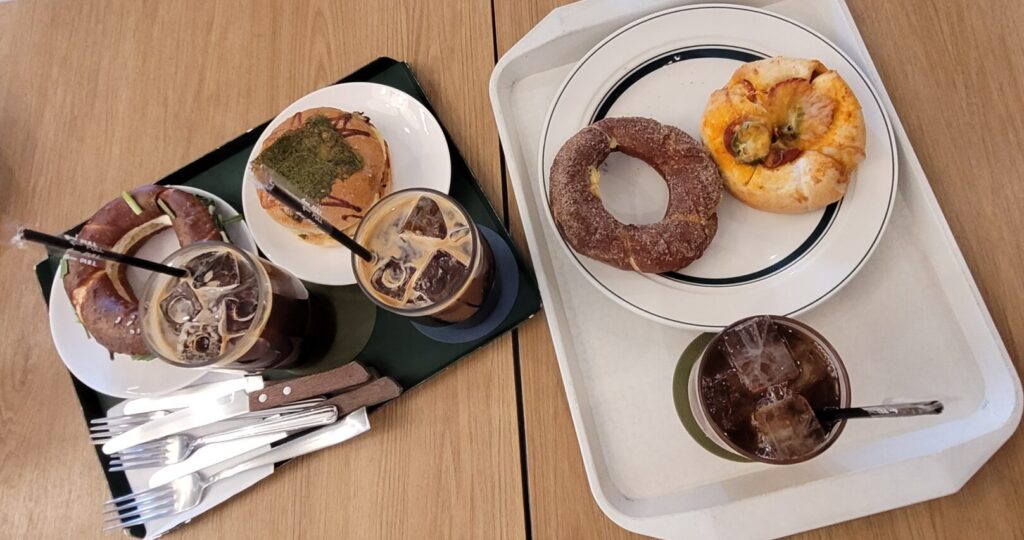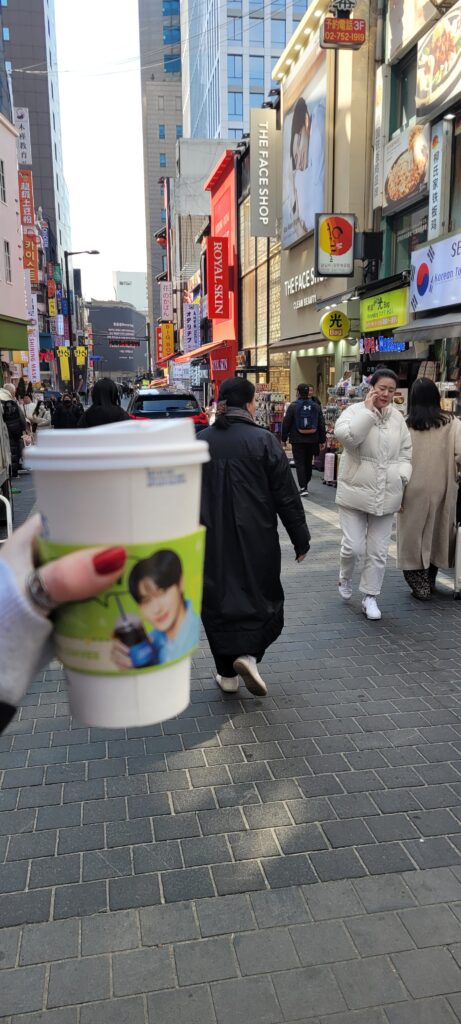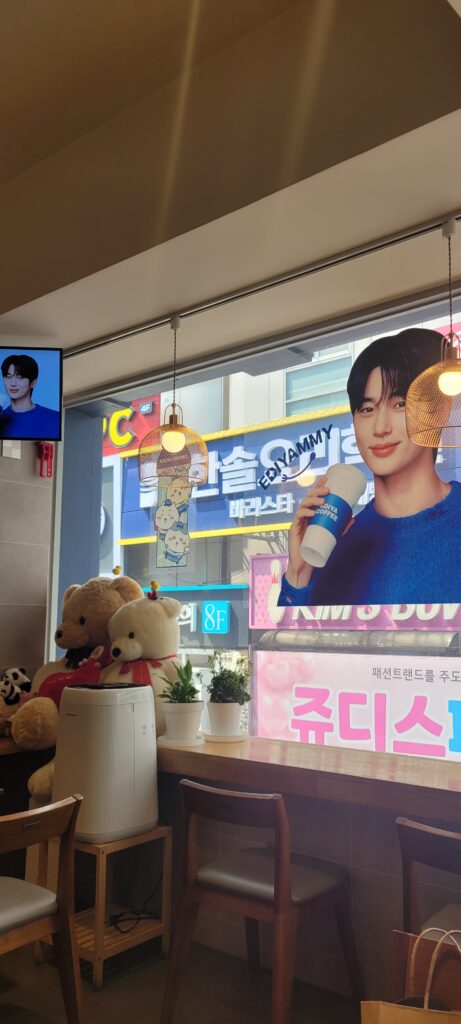Arriving in South-Korea
I took a direct flight from Paris to Seoul with T’way Airlines. My round trip cost 513 euros. The journey to Seoul took around 12 and a half hours (quite long!) Two meals were included, but from the start, communication with the flight attendants was challenging as they mostly spoke Korean. Even though I had learned some basic phrases, I couldn’t fully understand what they were saying.
As soon as I arrived at the airport, I was impressed by the country’s advanced technology. For example, there were robots available to assist with luggage, and at customs, no staff spoke directly to us, a robot gave instructions in our native language after scanning our passport.
After completing all the check-ins, I needed to buy a T-money card for transportation. At the airport, you can find cute versions with Line Friends characters. You simply load money onto it, so don’t forget to exchange currency directly at the airport or withdraw Korean won from an ATM. I used Hana Bank, it was affordable and easy. However, even at the airport, the staff didn’t always speak English fluently.
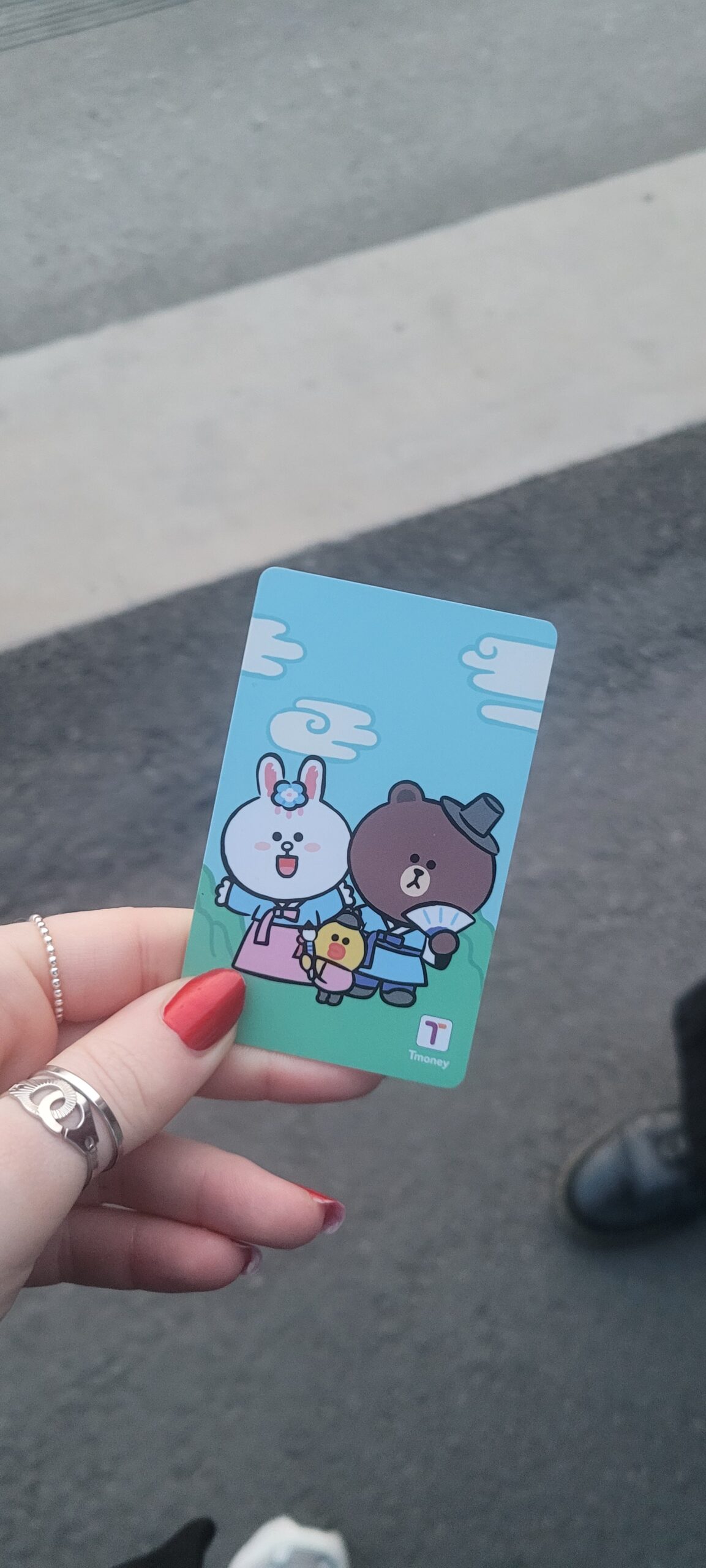
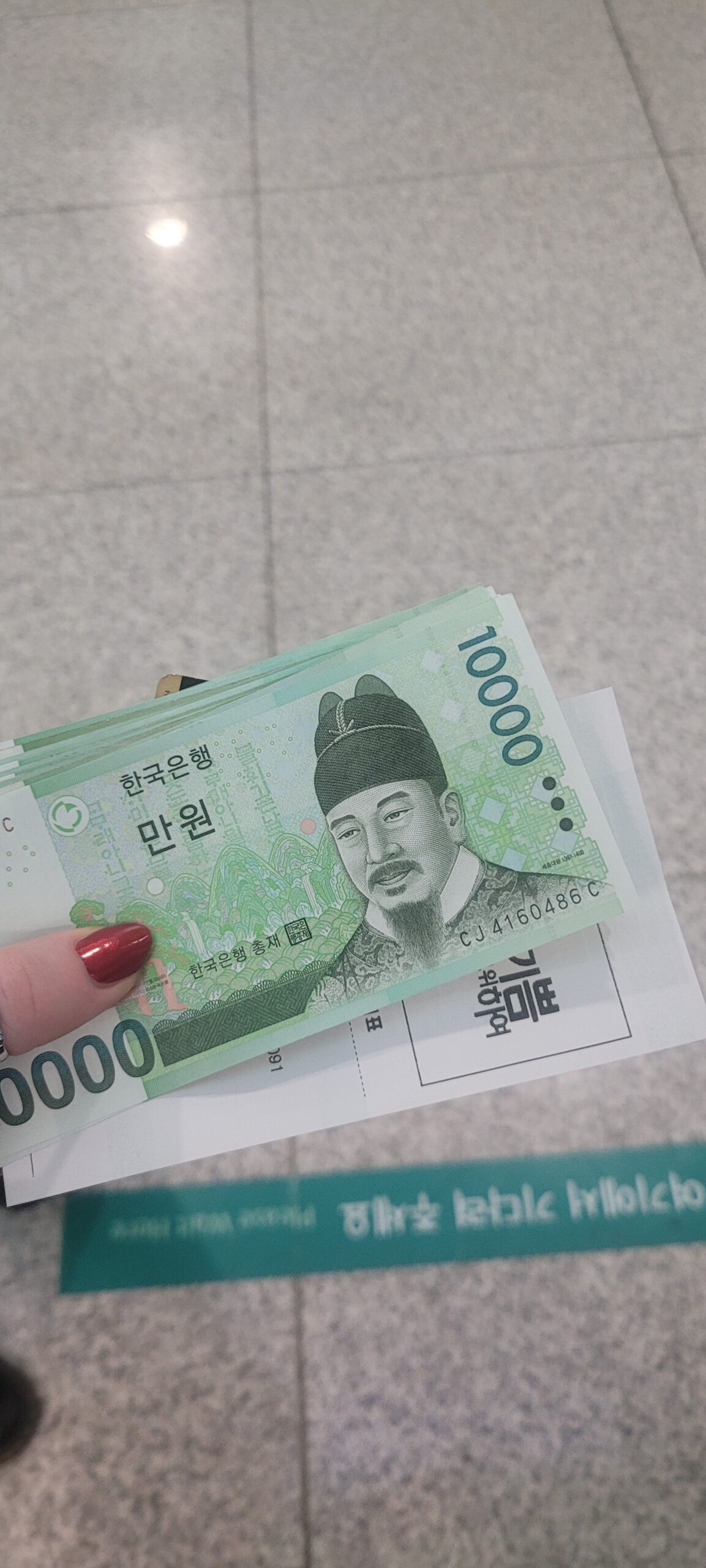

Before arriving, I recommend downloading specific apps such as Naver Map, which works similarly to Google Maps. I also recommend taking an international credit card, so check with your bank, or you can consider other options like Revolut. I’ve also set up Papago, a great translation app.
After that, I checked into my dormitory, named Happy Garden Guesthouse and located in the heart of Seoul in Myeong-dong, a busy neighborhood famous for its many shops. I don’t regret choosing this place to stay for my 7 days there because it was very affordable (and clean), I payed 166 euros for my entire stay. The staff spoke English, and I was able to share the space with women from around the world.
Additionally, the neighborhood is close to Namsan Tower and its cable car, and not too far from Gyeongbokgung Palace, only 39 minutes on foot or 17 minutes by subway.
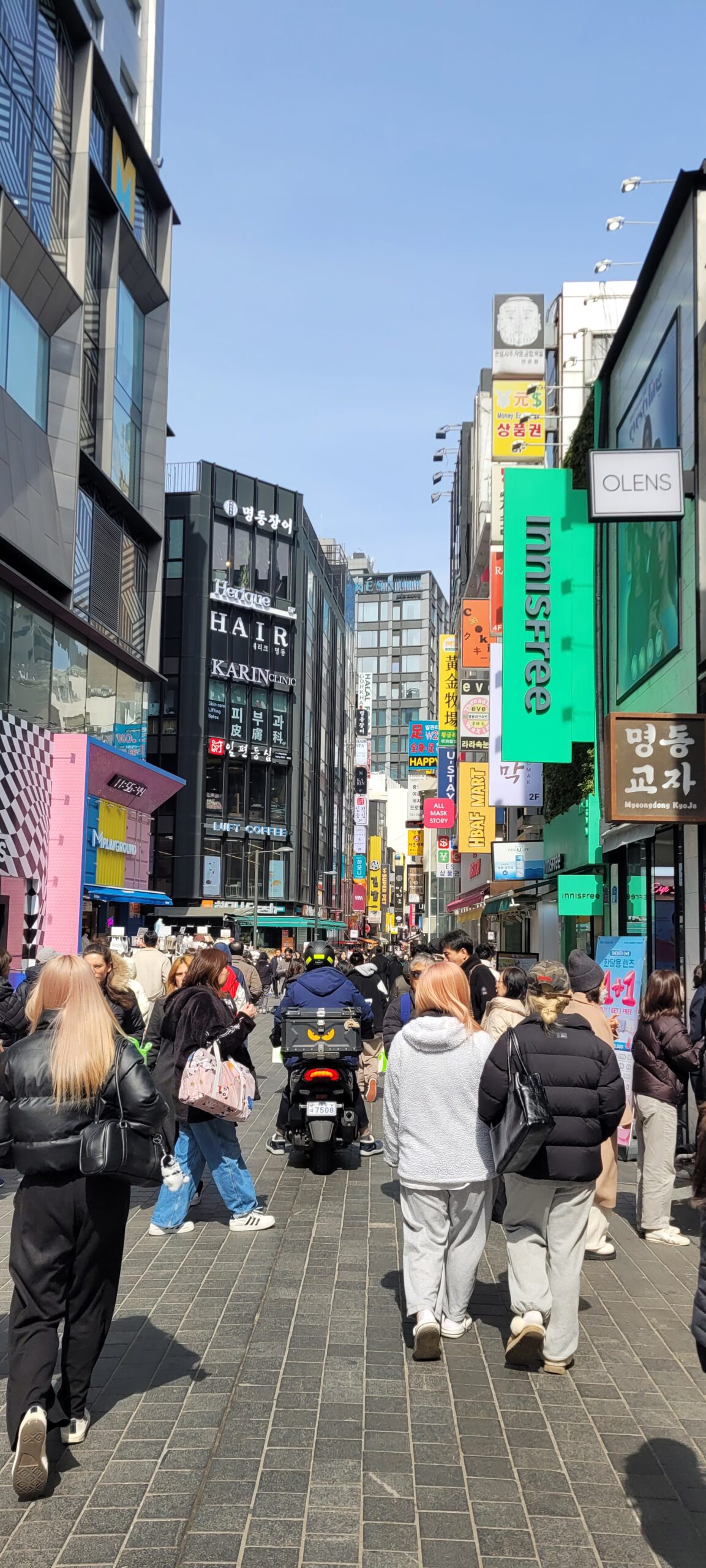
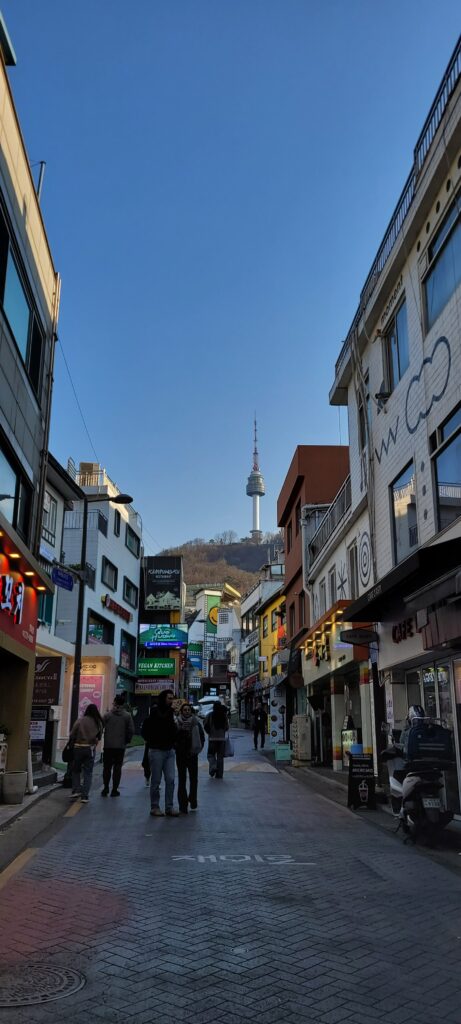
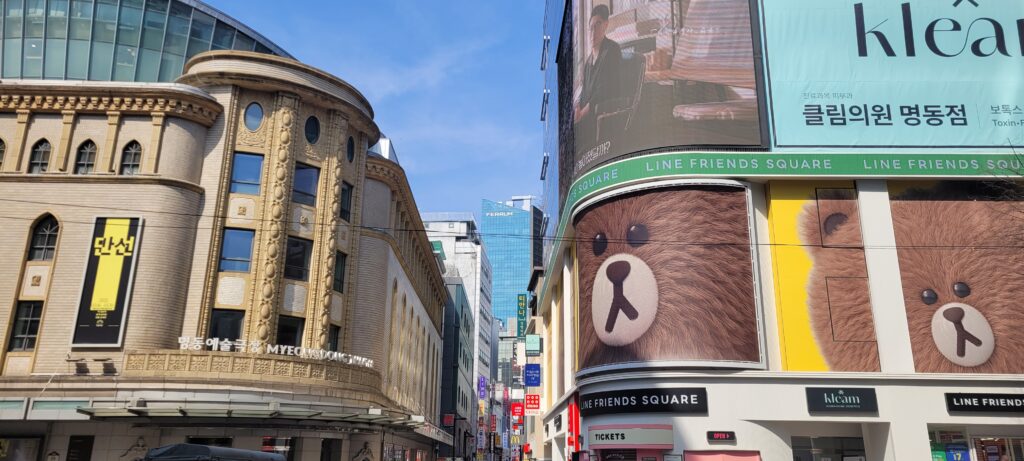
My first stop was to explore Myeong-dong and try some local food. We had fried chicken at BBQ Chicken, a famous brand that Koreans loved when I was living in Toronto. After that, we tried Bungeoppang, the fish-shaped pastry traditionally filled with sweet red bean paste, but you can also find versions with chocolate or custard cream. I loved the street market vibe in Myeong-dong.
In Seoul, there are several places you must visit, and I took the time to explore as many of them as I could. First, you have to visit COEX, the largest shopping mall in Asia, and the famous Starfield Library, which is located inside COEX.
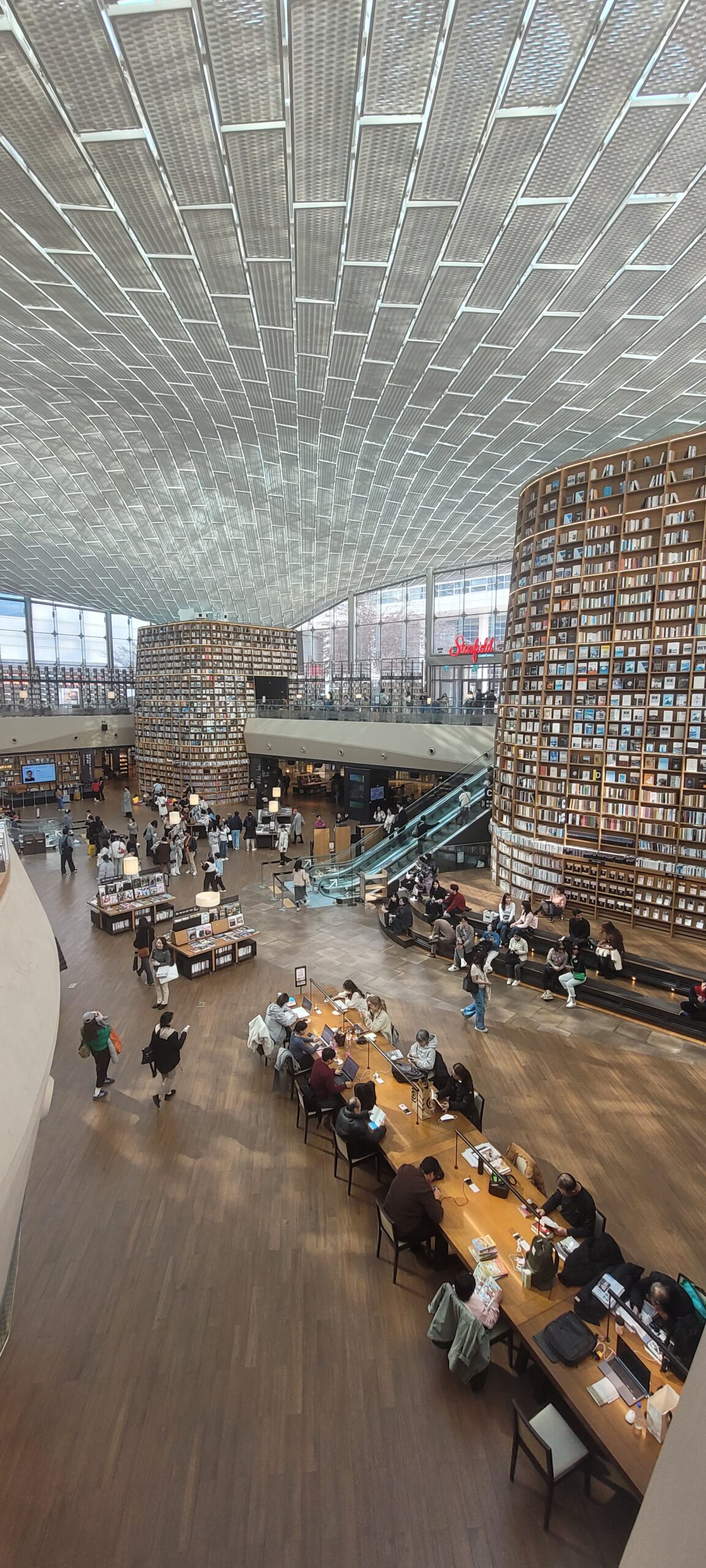
It is located on the south side of the Han River, close to Gangnam Station. If you go to Gangnam, you can walk around and visit K-pop Road. There are many luxury shops there, such as Louis Vuitton and other high-end brands. In Apgujeong Rodeo Street, you can also explore another famous area known for its trendy boutiques and stylish atmosphere.
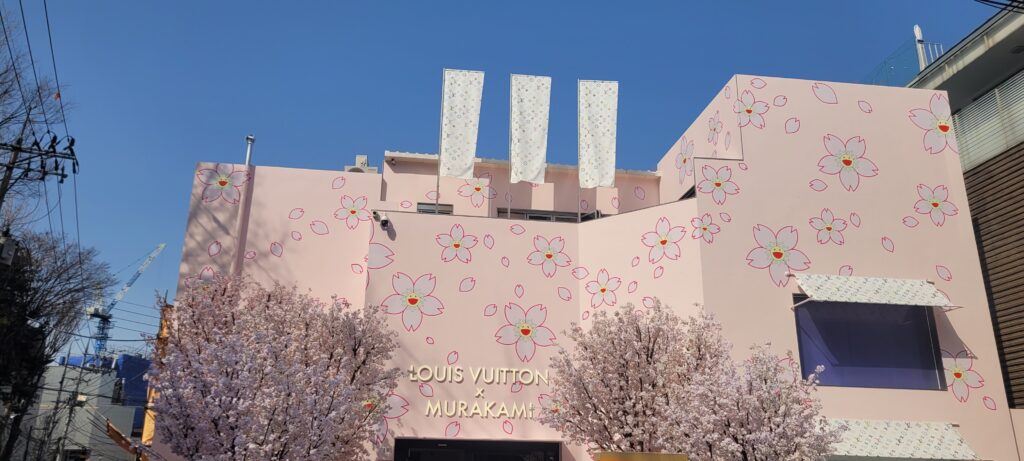
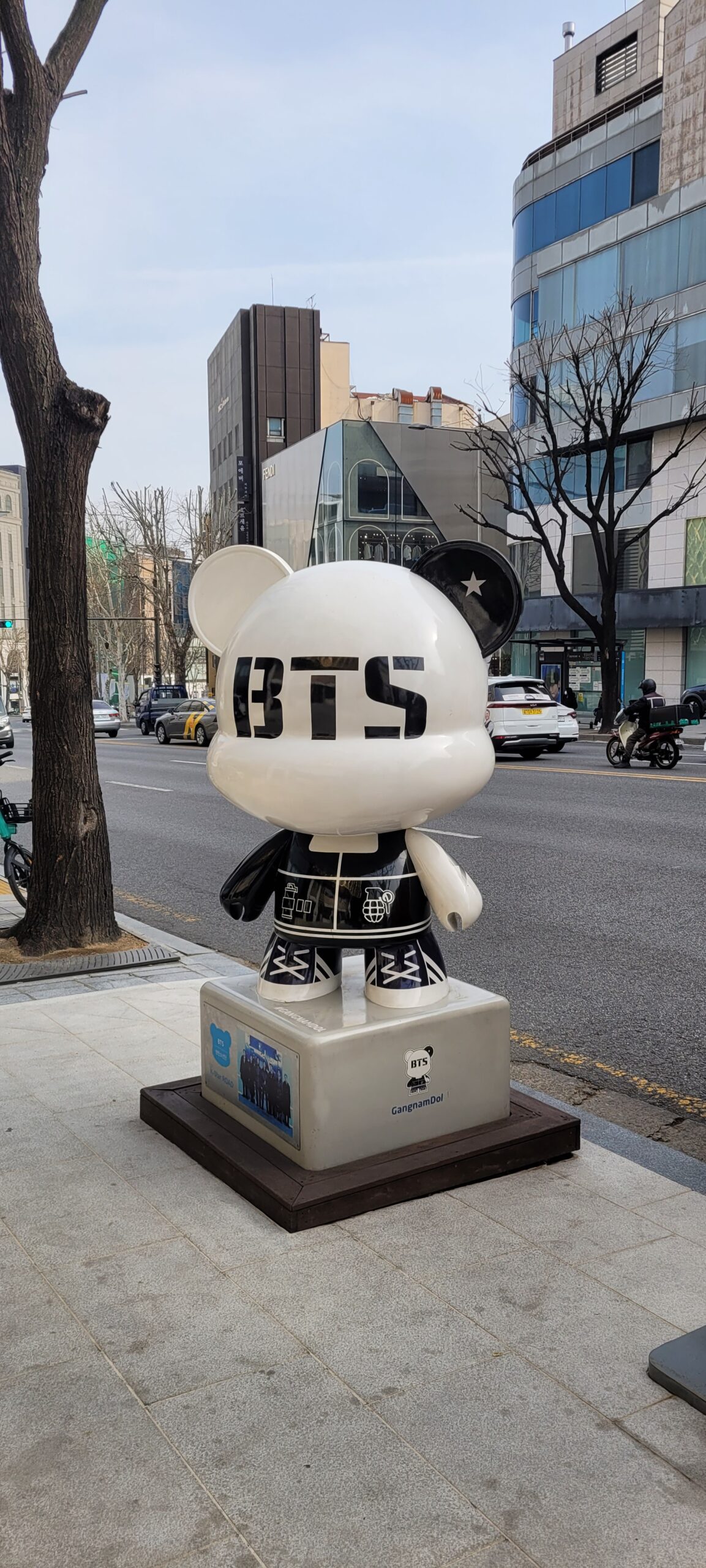
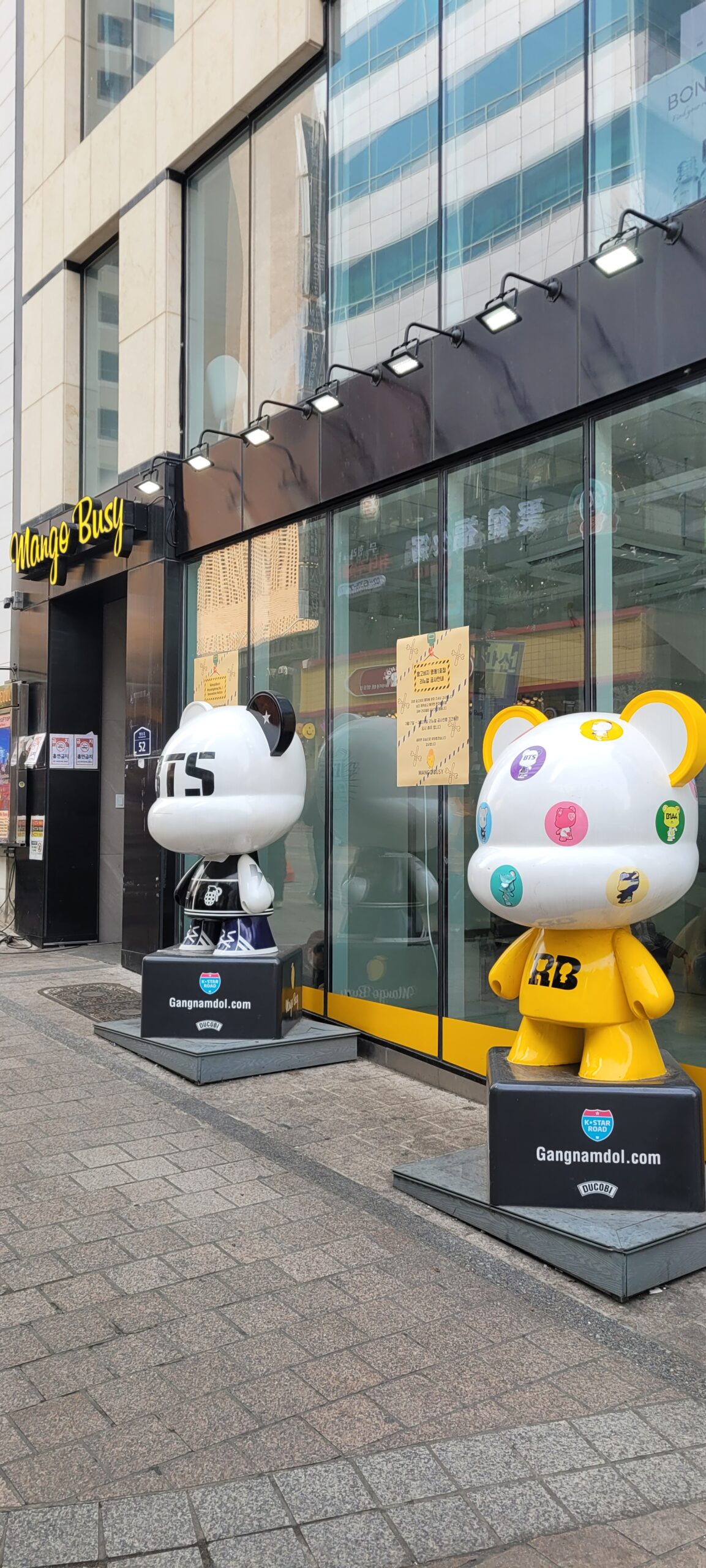
Hongdae is a paradise for young Koreans and foreigners alike. There are plenty of shops with affordable prices, lots of restaurants, and usually street performances like singing and dancing. In both Myeong-dong and Hongdae, you’ll find Line Friends Stores and Artbox shops, which offer cute and affordable stationery and home goods.
There are also several K-pop shops, which are amazing for fans. You can find so many goodies and merchandise about your favorite bands. Something I really enjoyed, too, was hearing music playing in the streets, it creates such a lively and fun atmosphere!
The Must-Visit Traditional Places in Seoul
Of course, Seoul have so many traditional place you must visit.
Firstly, I visited the Gyongbokgung Palace, located in front of the Government Building. The palace was built during Korea’s Joseon Dynasty (1392–1897), more precisely in 1395, a few years after her fondation.
The name “Gyeongbokgung” means “Palace Greatly Blessed by Heaven,” and it symbolized the new dynasty’s authority and stability.
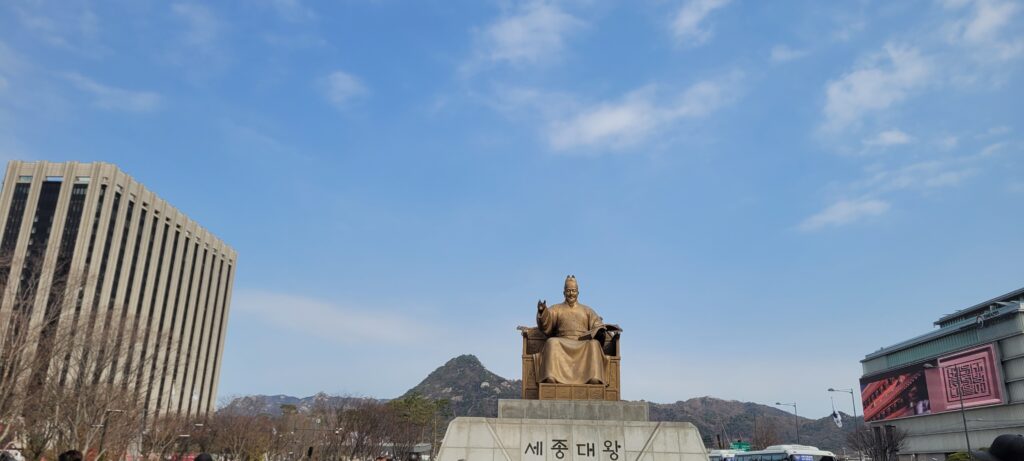
For centuries, Gyeongbokgung was the heart of royal life, politics, and culture. However, during the Japanese invasions in the late 16th century, much of the palace was destroyed by fire. It remained abandoned for about 270 years, until it was reconstructed in the 19th century. After the independance of Korea and still nowadays, the Palace have some restoration ongoing and it’s a tourist post but also a symbol for the Korean. And if you visit with the traditional clothes, the Hanbok, you don’t need to pay your entrance fee.
One of the best experiences is seeing the Changing of the Guard Ceremony at the main gate, a colorful event that happens several times a day!
I visited Changgyonggung Palace and paid for the entrance this time, but it was only 1,000 KRW (only 0,61 euros). It’s one of the Four Grand Palaces of the Joseon Dynasty.
If you want to experience traditional Korean architecture, I recommend visiting Bukchon Hanok Village. It’s a beautiful neighborhood made up of hundreds of traditional Korean houses, called hanok, which date back to the Joseon Dynasty. First, I visited Bukchon Hanok Village, where you can walk through the history of the city. The place is very quiet, and there is even someone supervising to make sure everyone respects the silence. Although it was a beautiful place, it felt a bit too crowded for me.
If I had to recommend a traditional hanok village, I would choose Namsangol Hanok Village, located near Chungmuro Station. This village was much quieter, and you might be surprised by its location, right in the middle of the modern skyline. It’s greener, and you enter through a Buddhist temple with colorful architecture. If you listen carefully, you can even hear soft music playing in the background.
On the museum side, I highly recommend visiting the War Memorial of Korea. It’s a huge museum, built in 1994, where you can learn more about the different invasions by Japan and China, as well as, more recently, the Korean War. I studied this period during my undergraduate degree, so it was very important for me to understand Korea’s perspective and to feel the memory of a conflict that, for them, is still very present. I spent at least four hours in the museum.
I also visited the National Museum of Korea, which is very large as well, so you might want to plan more than four hours there too. Both museums are free, as are many others in Korea.
The Better Views of Seoul
To admire the sunset, you can walk along the Han River, where you’ll find different scenic spots. There are several parks, like Jamwon Hangang Park and the Glass Garden, which offer beautiful walking paths. Many couples choose to have a picnic there and enjoy the view. They also recommended that I try the famous pocha alongside the Han River, casual places where you can drink (especially Soju) and enjoy Korean street food.
Don’t be surprised if the sky looks a bit unclear, the pollution is visible, and my Korean friends told me that much of it comes from China. South-Korea actually deals with fine dust, espacially in Spring, which is dangerous for the health and can affect breathing. That’s why even before the Covid 19 it was common to wear a mask when the pollution level is too high, you can check this point on different app or even in some shops.

I also recommend going up to Namsan Tower. It’s not necessary to reach the top of the tower, but you can enjoy a great view of Seoul from its base. I took the cable car with my friend because it was a windy day, but if the weather is nice, you can walk up, it’s just a bit of a climb.
What you eat in Seoul ?
I wasn’t disappointed by the richness of the food in Korea. I think nowadays Korean street food has become really popular, especially thanks to social media, and for me, it was absolutely worth it!
When I was living in Toronto, my friends always told me, ‘You’ll see, everything is much cheaper and tastes better in Korea, with bigger portions.’ I had high expectations, but they were right!
I tried Gireum-Tteokbokki, which is cooked right in front of you at Sejong Village Food Culture Street. There are two versions: one made with regular oil and another with spicy chili oil, although for me, it wasn’t too spicy!
At the same place, I also had Hotteok, a small pancake made fresh before your eyes. The traditional filling is a delicious mix of cinnamon, nuts, and a little brown sugar. Of course, I couldn’t leave without trying the famous Gamja Corndog, a fluffy dough filled with sausage and cheese. You can even add potato pieces on the outside for extra crunch!
Last but not least of my street food tour, I tried the cute 10 Won Bread, filled with warm cheese and custard cream.
Seoul also has so many cafés to explore! Popular brands like Paris Baguette, Tous les Jours, A Twosome Place, and Ediya Coffee offer great iced coffees, Korean-style breads, and pastries.
When I was visiting Bukchon Hanok Village, I tried a restaurant listed in the Michelin Guide Seoul 2025 — Samcheongdong Sujebi.
If you go there, you must try their Sujebi soup, a delicious and classic Korean comfort food made with hand-torn dough pieces.
We also ordered the Green Bean Pancake (Bindaetteok) to go with it, and it was the perfect combination.
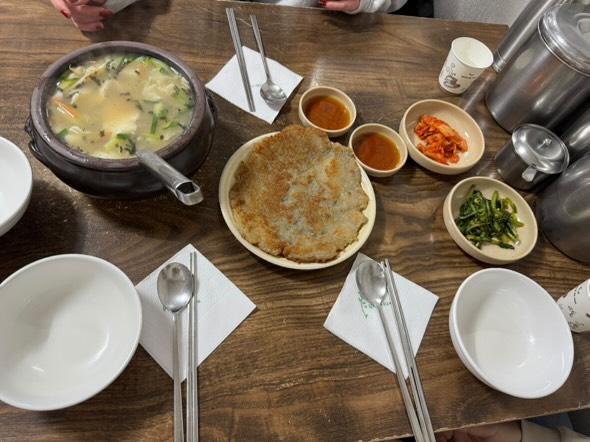
Everything comes with side dishes, called Banchan, such as Kimchi, seasoned spinach (Sigeumchi Namul), spicy cucumber salad (Oi Muchim), and pickled radish (Danmuji or Daikon)
Of course, I also tried eating a few times at convenience stores, like Nice to CU. I had gimbap, ramyeon (Korean cup ramen), and tried some snacks from there. I think it’s really part of the Korean experience, the vibe of grabbing something quick and tasty. Plus, it’s so convenient to have these kinds of shops open 24/7!
At the end of my seven days, I didn’t want to leave Seoul. I was planning to go to Gyeongju, so I had to move on, but Seoul had completely won me over. It’s the perfect combination of busy, modern, working life and traditional, historical places. It’s a huge city, but everything is well connected by the subway, which makes getting around very convenient. And cheap. Even if people aren’t enought confident to speak English, I didn’t feel any incovenience because you can get by with Papago and some restaaurants have tablet at your disposal.
Thank you for reading!

